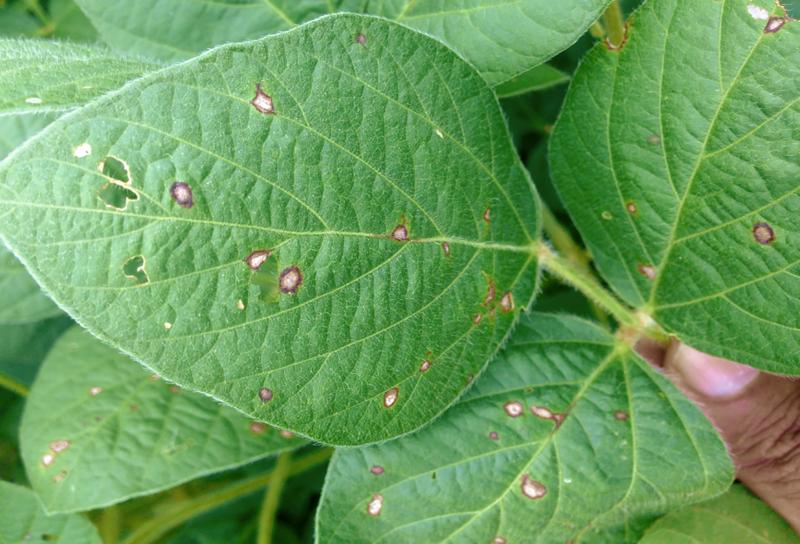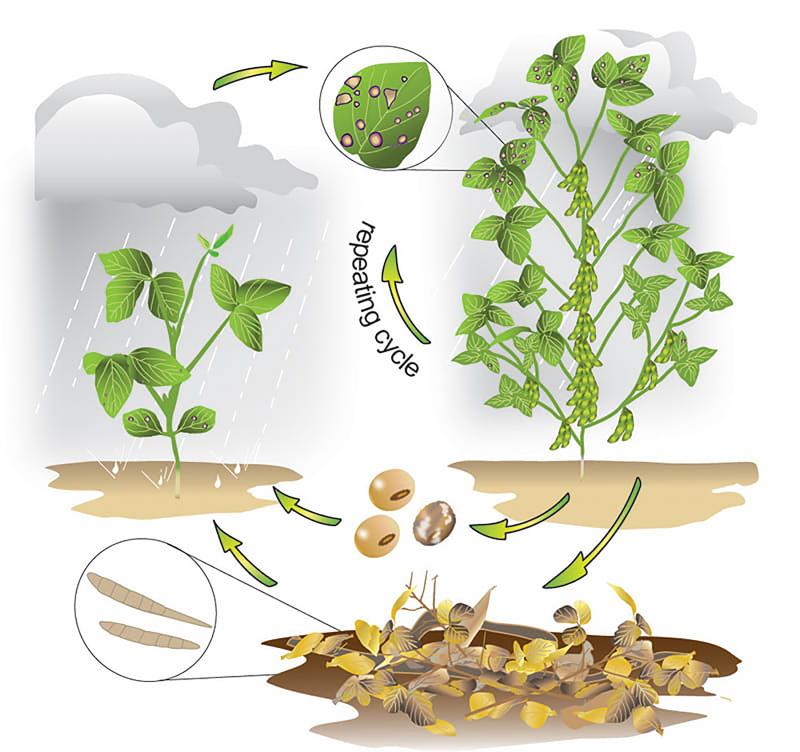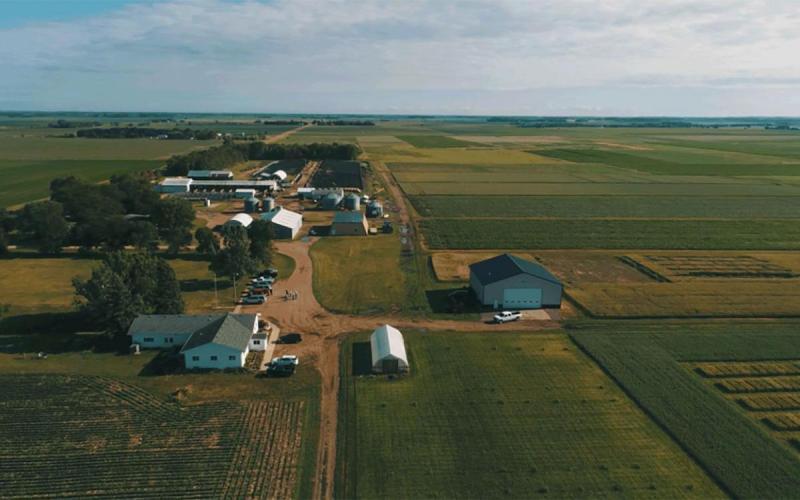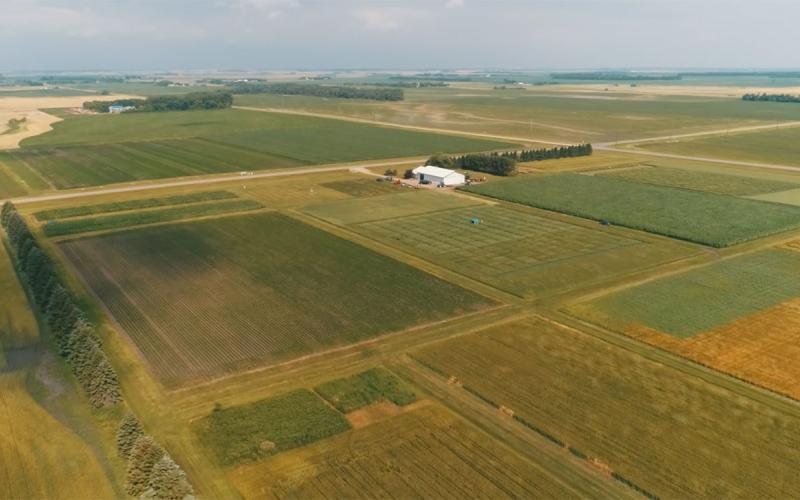
Written with contributions by Emmanuel Byamukama, former SDSU Extension Plant Pathologist and Febina Mathew.
Frogeye leaf spot, also known as Cercospora leaf spot, was found in several soybean fields scouted the week of August 19, 2019. Frogeye leaf spot is characterized by irregular to circular lesions, which are tan-to-gray in color with reddish-purplish borders (Figure 1). Lesions develop in young expanding leaves in the top canopy and may coalesce to form larger spots. Continued disease development will lead to premature leaf drop. Frogeye leaf spot symptoms can also develop on pods and stems. This disease is usually observed in soybean after the R1 (beginning flower) growth stage and its development is favored by frequent rains and warm conditions.
Source of Inoculum
Frogeye leaf spot is caused by a fungal pathogen, Cercospora sojina. This pathogen survives on crop residue but inoculum can also come from the seed (Figure 2). Spores of the frogeye leaf spot pathogen are splashed onto plants by rain and can also be picked up by the wind and spread for short distances.

Management Strategy
Frogeye leaf spot can be managed through:
- Selecting resistant cultivars.
- Crop rotation, tillage (where practical) to remove or reduce source of inoculum.
- Application of a timely fungicide.
The best timing for a foliar fungicide against frogeye leaf spot is between R3 (beginning pod) to R5 (beginning seed) since this disease tends to be a mid-to late season disease. For fungicides effective against frogeye leaf spot, see this publication. The North Central Soybean Disease Working group produces the efficacy table with data contributions from SDSU.
Caution on Fungicide Resistance
In the 2018 growing season, 29 frogeye pathogen isolates from 4 southeastern South Dakota counties were found to be resistant to strobilurin fungicides (quinone outside inhibitors, QoI – Group 11). This indicates a potential of wide spread fungicide resistance in this pathogen in the state. If a fungicide is needed to manage frogeye leaf spot, consider utilizing different modes of action or using a combination of different modes of action to help avoid or delay fungicide resistance development.
If fungicide resistance is suspected (continued disease development after fungicide application), soybean leaf samples from the suspected fields should be sent to the SDSU Plant Disease Diagnostic Clinic (Plant Science Building RM 153, Jackrabbit Dr, Brookings SD 57007) for confirmation.

